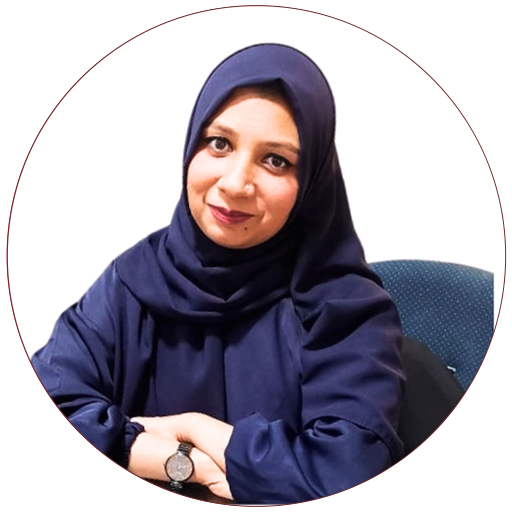HOW TO MANAGE ANXIETY IN DAILY LIFE

WHAT IS GENERALIZED ANXIETY?
SIGNS AND SYMPTOMS OF GENERALIZED ANXIETY:
The primary sign of generalized anxiety disorder (GAD) is uncontrollable stress or worry that interferes with day-to-day functioning. Additional signs could be:
- Having trouble sleeping, feeling agitated, restless, or having trouble focusing.
- Becoming fatigued easily, tensed and troubled stomach.
- An irregular or more noticeable heartbeat (palpitations).
- Feeling dizzy or lightheaded, depressed, or in a bad mood.
A study on the population of the UK stated that Generalized anxiety disorder and its symptoms are associated with poor physical, emotional, and social functioning and frequent primary and acute care visits.
COPING WITH GENERALIZED ANXIETY DISORDER:
1- RELAXATION TECHNIQUE:
After a long, stressful day, one can benefit from a good relaxation technique, such as Progressive Muscle Relaxation (PMR). To practice muscle relaxation, sit comfortably on the couch, close your eyes, and inhale deeply. Starting with your feet, you should tighten your muscles as much as you can, hold the tension for a few seconds, and then relax. It is unexpectedly calming to contrast the release with the strain. Ascend slowly, starting with your calves and working up to your thighs, chest, and arms.
Every muscle you contract and release will feel as though it is releasing some of the tension. You'll notice that the physical tension has begun to melt away by the time you get to the neck and face.
2- ANXIETY SELF-HELP:
- Exercise: Consistent physical activity can help control the body's stress response system and elevate mood. Proven by a lot of research that effects of physical fitness on mental health are praiseworthy.
- Dietary Considerations: Reducing alcohol and caffeine intake can help lessen anxiety. Consuming a balanced diet for a healthy mind is an essential step toward making lifestyle changes to combat anxiety.
- Sleep hygiene: a regular sleep schedule is essential because insomnia makes anxiety worse.
- Journaling: Writing about anxious thoughts can help people process their feelings and lessen the influence they have. This step not only regulates but also aids in building resilience.
3- COGNITIVE BEHAVIORAL THERAPY:
Cognitive restructuring is the gradual process of recognizing and combating faulty or unreasonable thought patterns, such as overgeneralization and catastrophizing
The 2023 research highlights the various efficacies of CBT, which includes the mindfulness meditation, talking therapy for anxiety and grounding techniques to help individuals accept anxiety as a natural emotion rather than a threat to be avoided.
4- THE USE OF PHARMACEUTICALS:
Drugs are frequently prescribed for the short term and long term control of anxiety symptoms by the specialist in mental health.
There is a huge chance of dependence and resistance to treatment with anti-anxiety drugs, and they should be used with caution under the supervision of a mental health professional who can check up on symptoms and signs.
A WORD FROM MENTAL NURTURING:
As someone who works with individuals navigating anxiety, I often emphasize the importance of seeking support—whether it’s through joining a support group or reaching out to loved ones to discuss their mental health. One of the most significant challenges of generalized anxiety disorder (GAD) is the sense of isolation it can create. Reaching out for support can help mitigate stressful feelings and provide a guide for dealing with anxiety attacks, preventing more serious problems like panic and post-traumatic stress.
In my experience, as individuals develop healthy boundaries and cultivate emotional intelligence, their anxiety begins to ease. Setting boundaries allows for better control over stressors, while self-compassion reduces the pressure to be perfect, helping to quiet the inner critic by decreasing the fear of being judged by others. Additionally, reducing exposure to harmful media—such as sensationalized news or distressing memes—can create a calmer mental space, free from constant triggers.
However, the most effective approach to managing GAD involves a combination of strategies. Therapy provides essential tools for understanding and reframing anxious thoughts, while medication can help regulate the brain's chemical processes. Incorporating relaxation techniques, such as deep breathing or mindfulness, further supports emotional regulation. Ultimately, time is also a critical factor—recovery from GAD is a gradual process, and patience is key. If you're struggling with anxiety, I strongly recommend consulting a mental health professional to create a personalized treatment plan and reclaim your well-being.
RESOURCES:
1- Suinn, R. M. (1984). Generalized Anxiety Disorder. Springer eBooks, 279–320.
https://doi.org/10.1007/978-1-4684-4694-4_7
2- Melaragno AJ. Pharmacotherapy for Anxiety Disorders: From First-Line Options to Treatment Resistance. Focus (Am Psychiatr Publ). 2021 Jun;19(2):145-160. doi: 10.1176/appi.focus.20200048. Epub 2021 Jun 17. PMID: 34690578; PMCID: PMC8475920.
3- Garakani A, Murrough JW, Freire RC, Thom RP, Larkin K, Buono FD, Iosifescu DV. Pharmacotherapy of Anxiety Disorders: Current and Emerging Treatment Options. Front Psychiatry. 2020 Dec 23;11:595584. doi: 10.3389/fpsyt.2020.595584. PMID: 33424664; PMCID: PMC7786299.
4- Website, N. (2024a, October 23). Generalised anxiety disorder (GAD). nhs.uk.
https://www.nhs.uk/mental-health/conditions/generalised-anxiety-disorder-gad/
5- Health Quality Ontario. Psychotherapy for Major Depressive Disorder and Generalized Anxiety Disorder: A Health Technology Assessment. Ont Health Technol Assess Ser. 2017 Nov 13;17(15):1-167. PMID: 29213344; PMCID: PMC5709536.

Written by:
Rumsha Abdul Aziz, MS Psychology,
On Feburary 13, 2025

